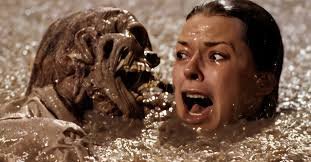“The 1982 Movie Poltergeist Used Real Skeletons As – Tymoff” Poltergeist, the 1982 horror classic that still haunts audiences, has been surrounded by whispers and rumors for decades. One of the most persistent tales is that the production used real human skeletons in its climax. This blog post dives deep into this claim, examining not just the truth behind the rumor but also the implications it had on the film and its legacy. We’ll explore everything from the decision-making process to the ethical considerations and the reactions it stirred among viewers and critics alike.
Table of Contents
The Scene That Started the Rumor
“The 1982 Movie Poltergeist Used Real Skeletons As – Tymoff“ The whispers about real skeletons being used started with the infamous swimming pool scene. In this climactic moment, the character Diane is assaulted by skeletons emerging from a muddy pit, which is supposed to be her swimming pool. These weren’t just any props; they looked disturbingly realistic. This choice added a visceral horror that few other scenes in cinema history have managed to evoke. But was this realism achieved with actual human remains? The truth has both fascinated and horrified fans for years.
Why Real Skeletons? Unpacking the Production Decision
“The 1982 Movie Poltergeist Used Real Skeletons As – Tymoff” Using real skeletons in Poltergeist was primarily a budget-driven decision. At the time, real human skeletons were actually cheaper to purchase than creating detailed replicas. Production designer James H. Spencer mentioned in interviews that the use of medical-grade skeletons, sourced from a company that supplied to medical schools, was seen as a cost-effective solution. This pragmatic choice, however, opened up a Pandora’s box of ethical questions and set a controversial precedent in film production.
Ethical Considerations and Industry Standards
The decision to use real human remains in Poltergeist brings up significant ethical issues. How does one balance the pursuit of cinematic realism with respect for the deceased? While no laws were broken—using skeletons for educational or professional purposes was legal—the moral implications remain debatable. Today, such a choice would likely be unacceptable, reflecting how industry standards have evolved to prioritize ethical considerations over mere aesthetic or financial concerns.
Behind the Scenes: Interviews with Cast and Crew
“The 1982 Movie Poltergeist Used Real Skeletons As – Tymoff” Several cast and crew members have weighed in on the use of skeletons over the years. JoBeth Williams, who played Diane, confirmed in interviews that the skeletons were real, which she only learned about after filming the scene. This revelation shocked her and has since contributed to the eerie lore surrounding the film. The production team defended their decision, citing historical precedents and the absence of legal prohibitions against using real human remains in films.
The Poltergeist Curse: Myth or Reality?
“The 1982 Movie Poltergeist Used Real Skeletons As – Tymoff” Alongside the controversy over its props, Poltergeist is also known for the so-called “curse” that some believe befell the cast and crew. Following the untimely deaths of several people associated with the film, including young actress Heather O’Rourke, superstitious connections were drawn to the use of real skeletons. While most rational explanations point to coincidence, the curse theory persists, fueled by the film’s macabre choice of props.
Viewer Reactions and Cultural Impact
Audience reactions to the revelation that real skeletons were used in Poltergeist were mixed. Some viewers found it to be a macabre touch that added to the film’s authenticity, while others felt it was a step too far, crossing ethical boundaries. The film’s impact on popular culture is undeniable, however, as it has prompted discussions about ethical filmmaking practices and the lengths to which directors will go to achieve realism.
Conclusion
“The 1982 Movie Poltergeist Used Real Skeletons As – Tymoff” The use of real skeletons in Poltergeist serves as a chilling footnote in cinema history, highlighting the complex interplay between artistic ambition and ethical responsibility. This decision not only added a layer of authenticity to the film but also sparked a broader conversation about the boundaries of ethical filmmaking. As we reflect on this practice from a modern perspective, it’s clear that Poltergeist’s legacy is as much about its production controversies as it is about its status as a horror classic.
Read More : Learn To Sit Back And Observe. Not Everything Need – Tymoff
